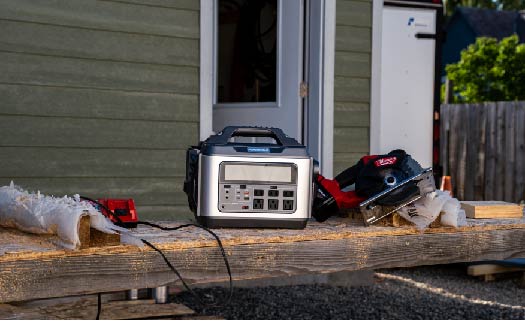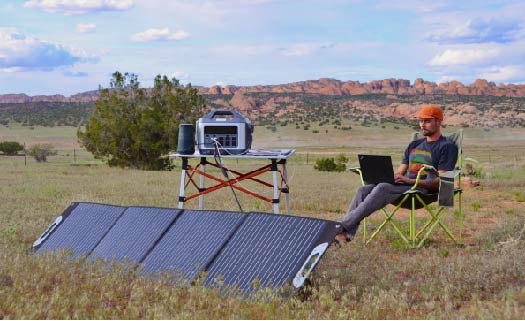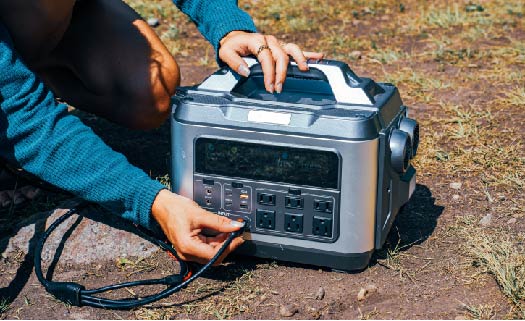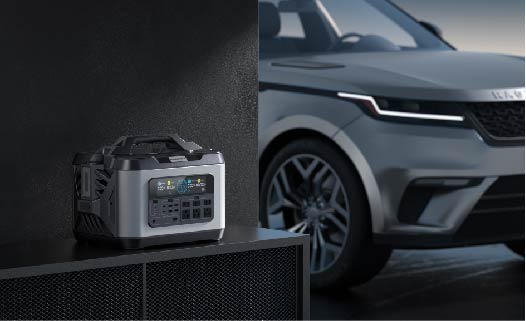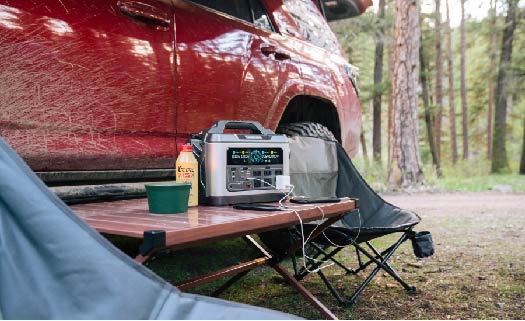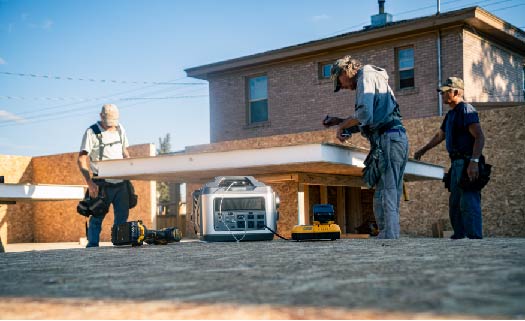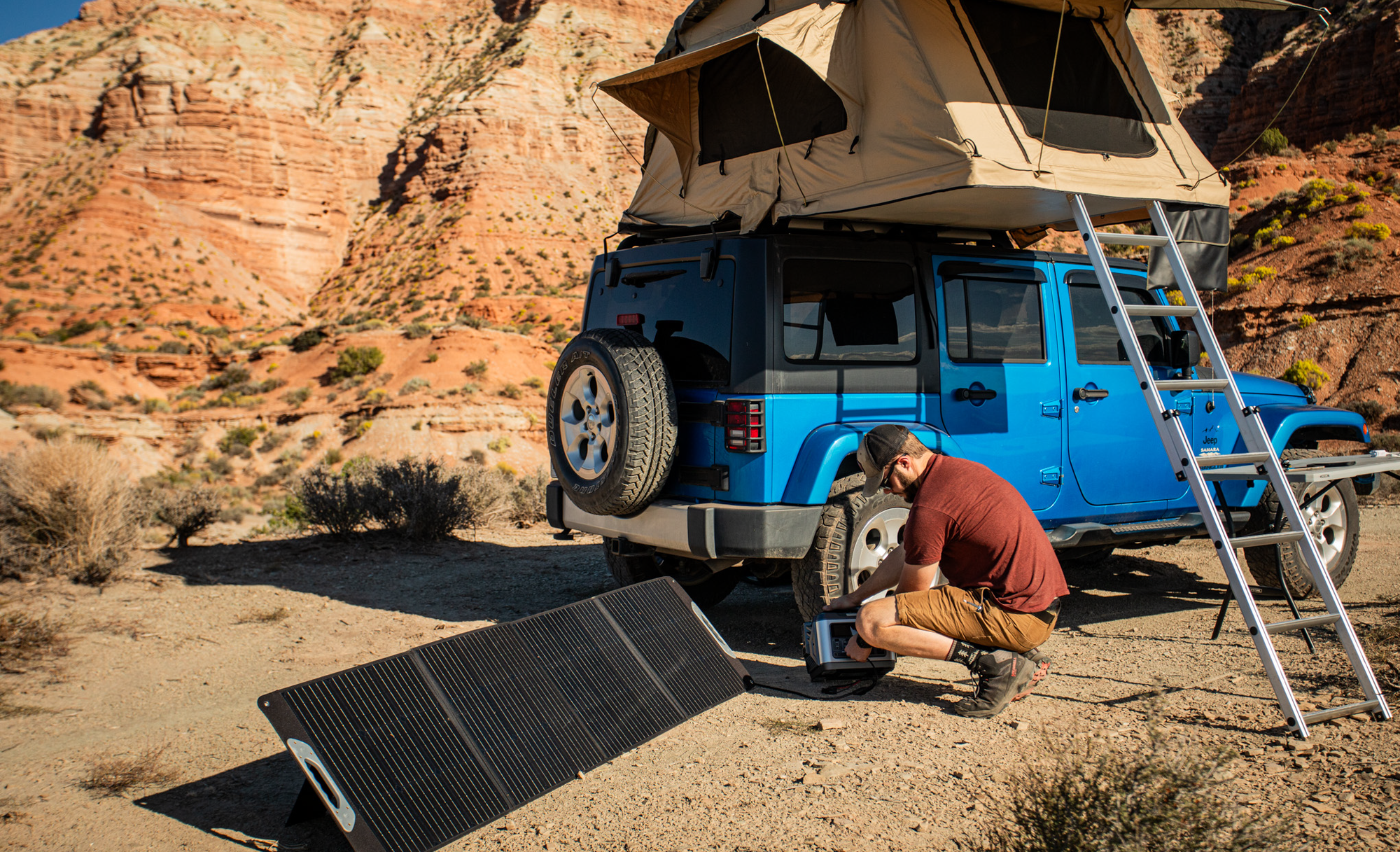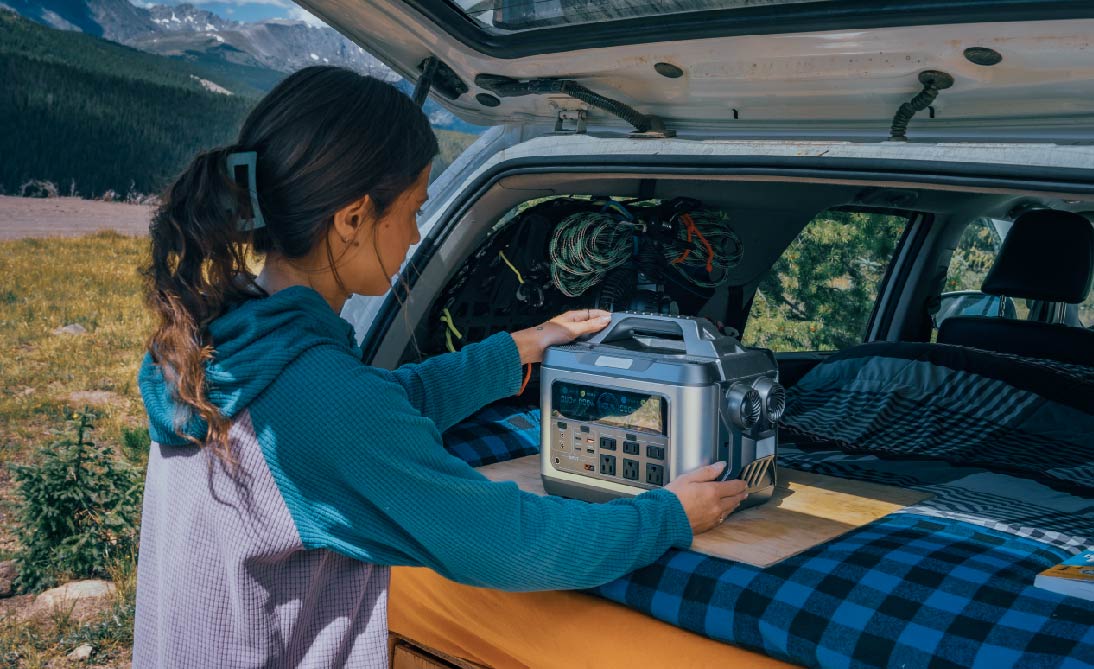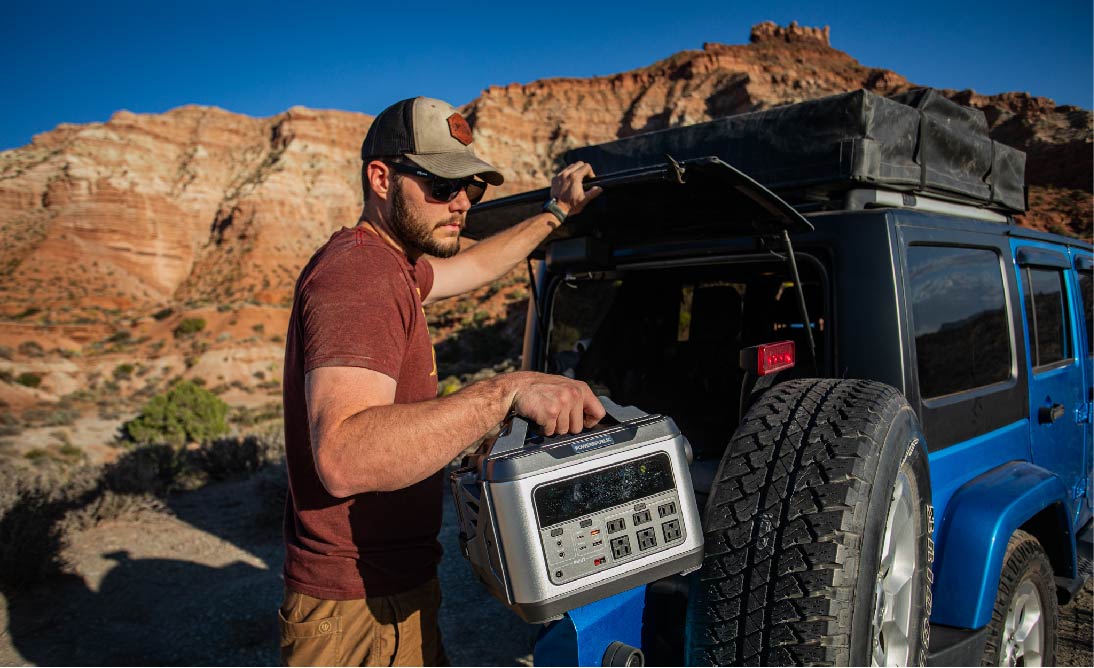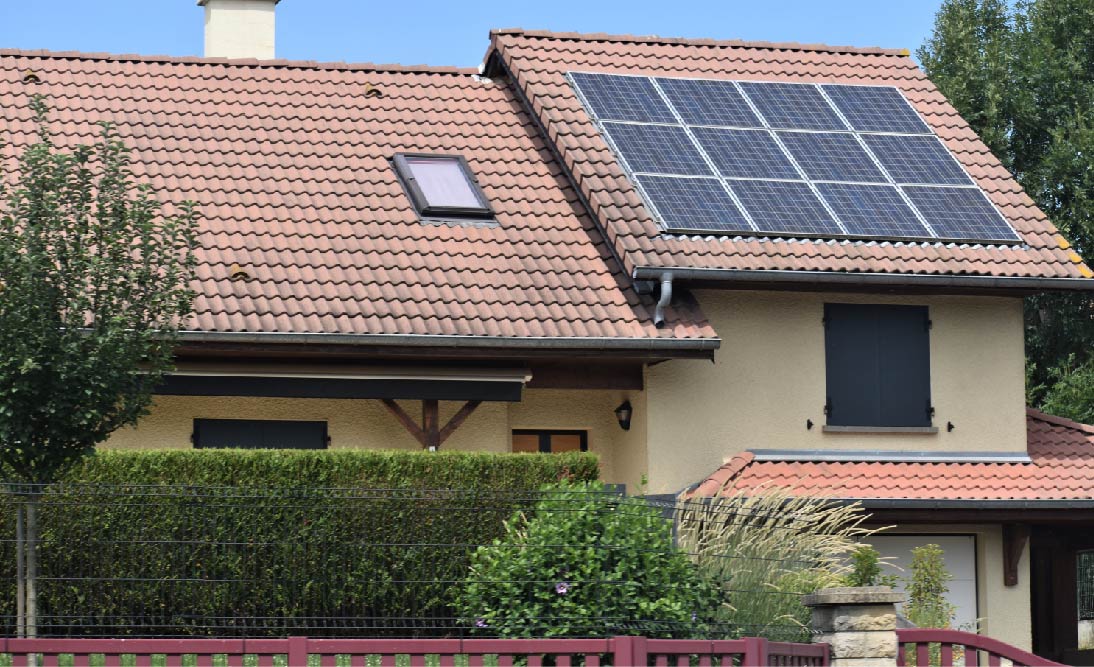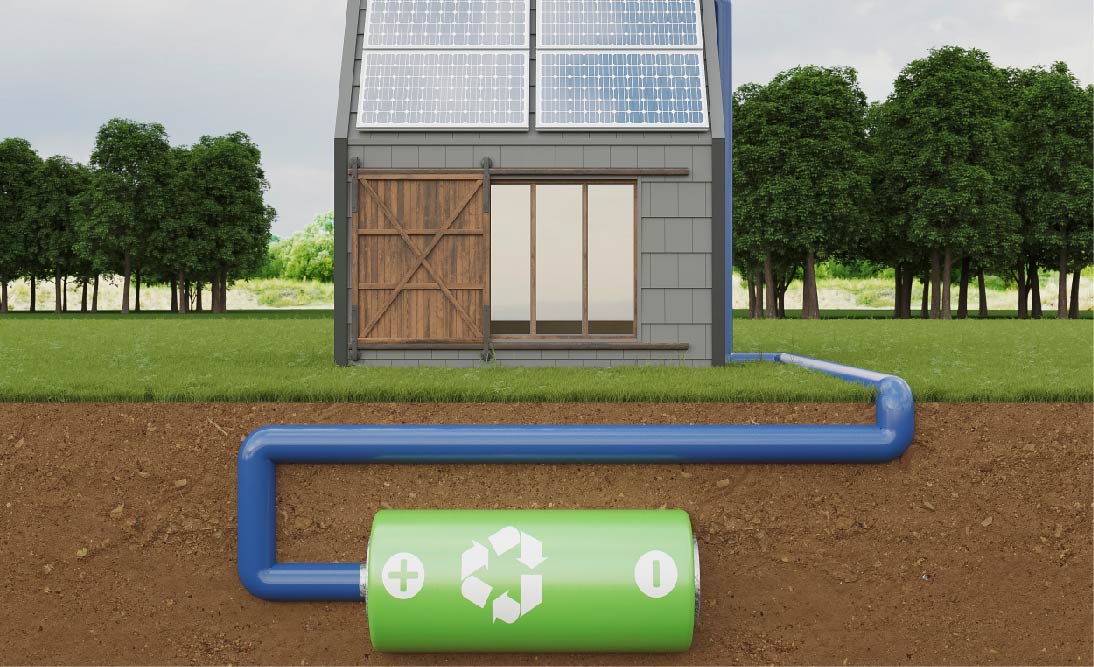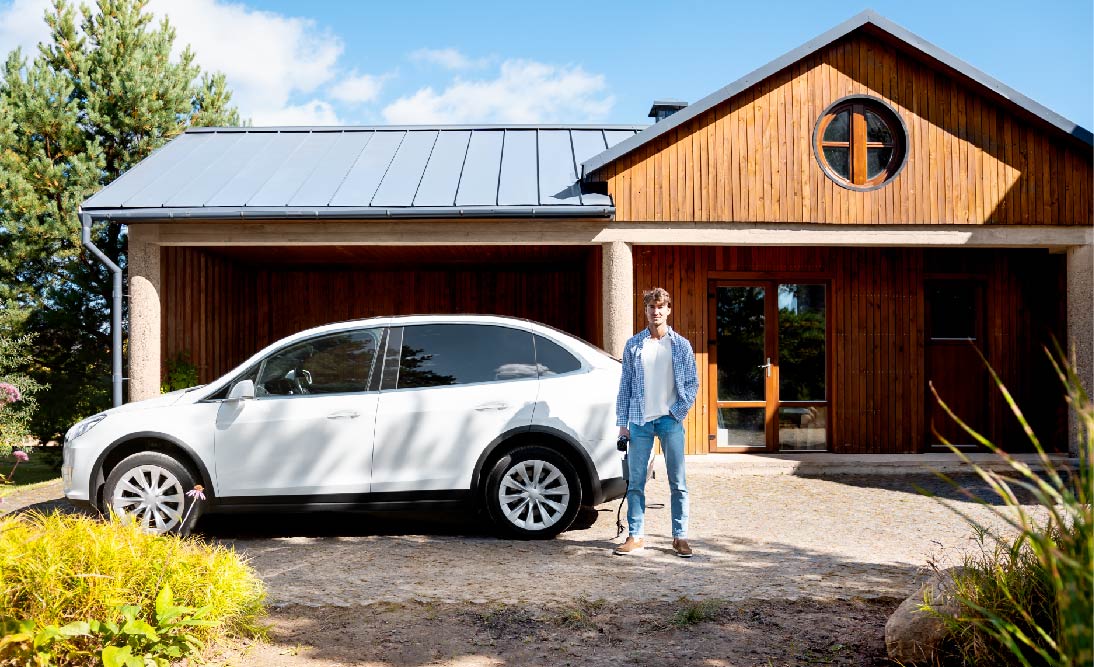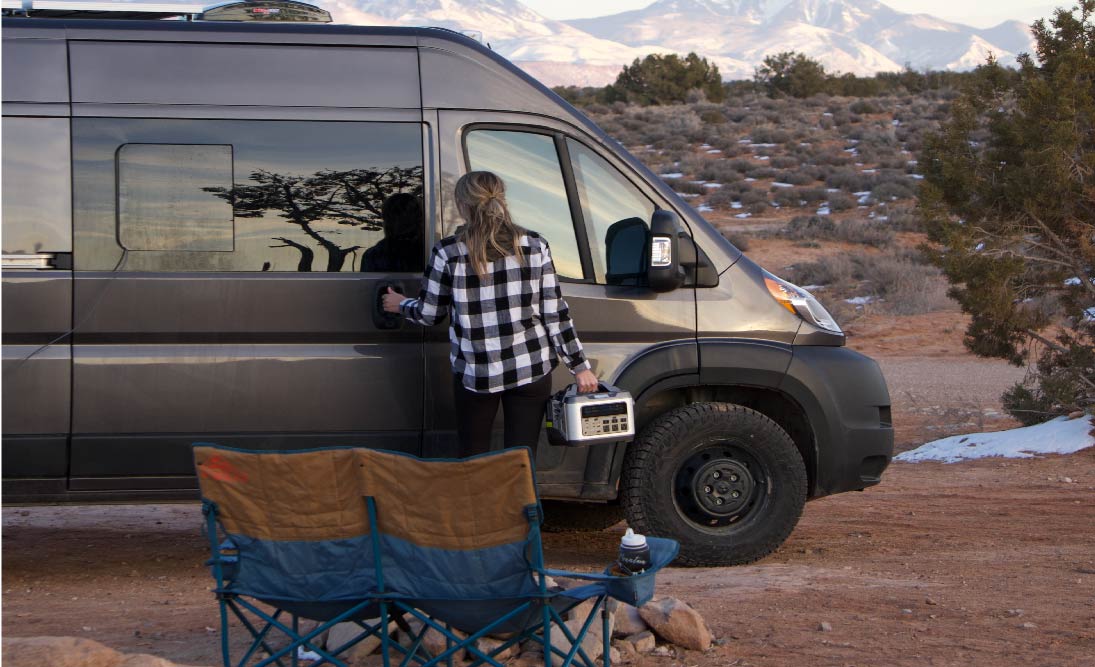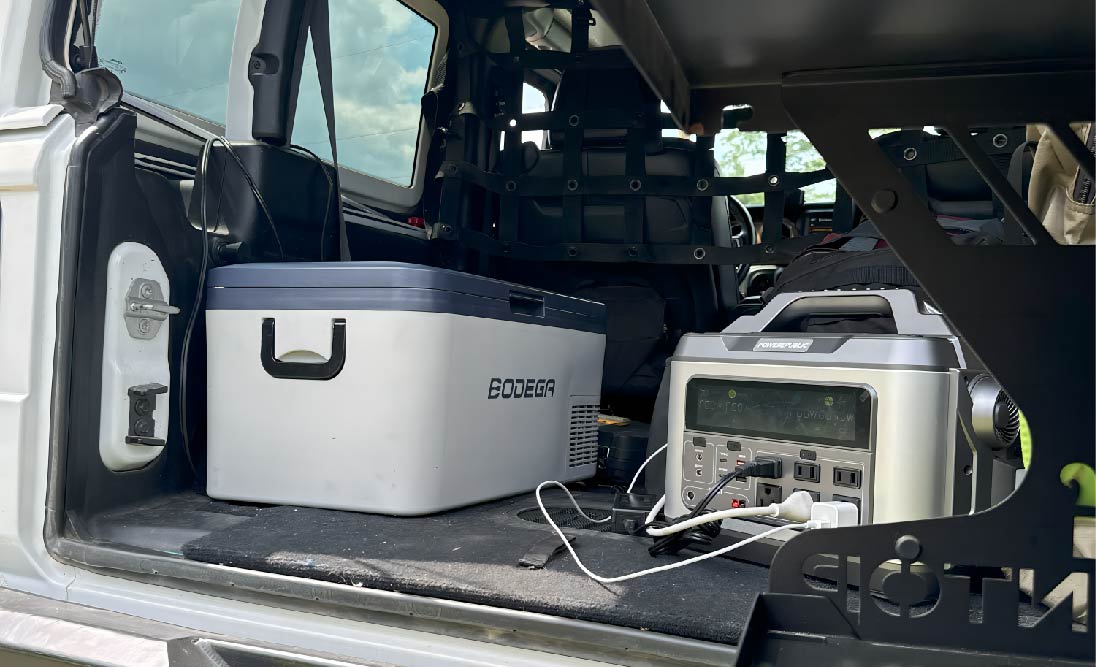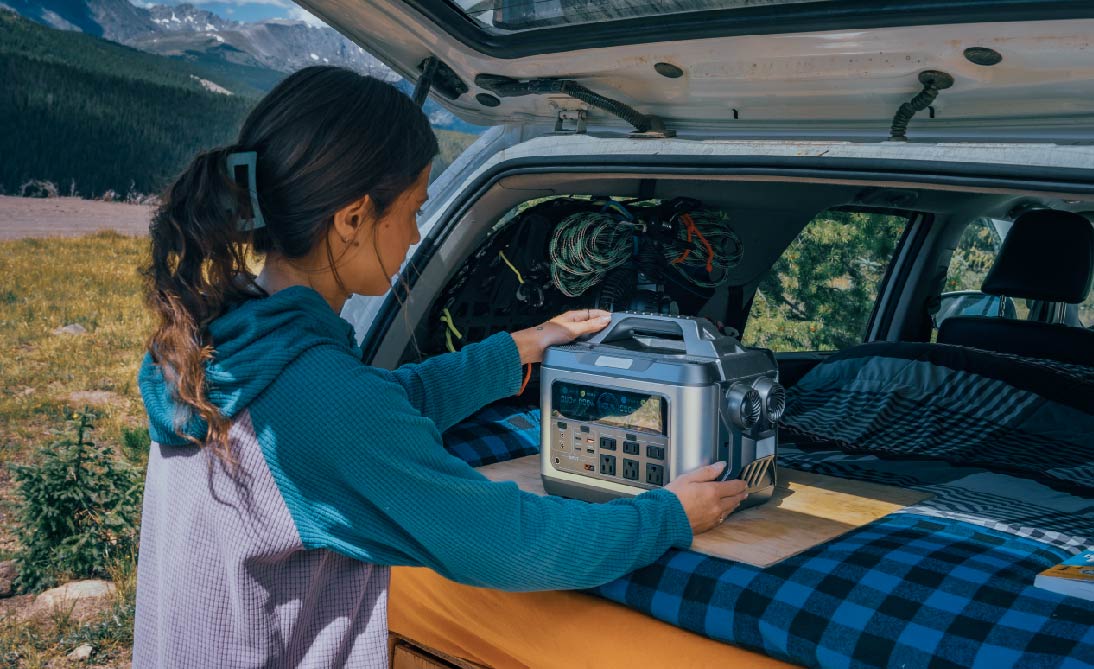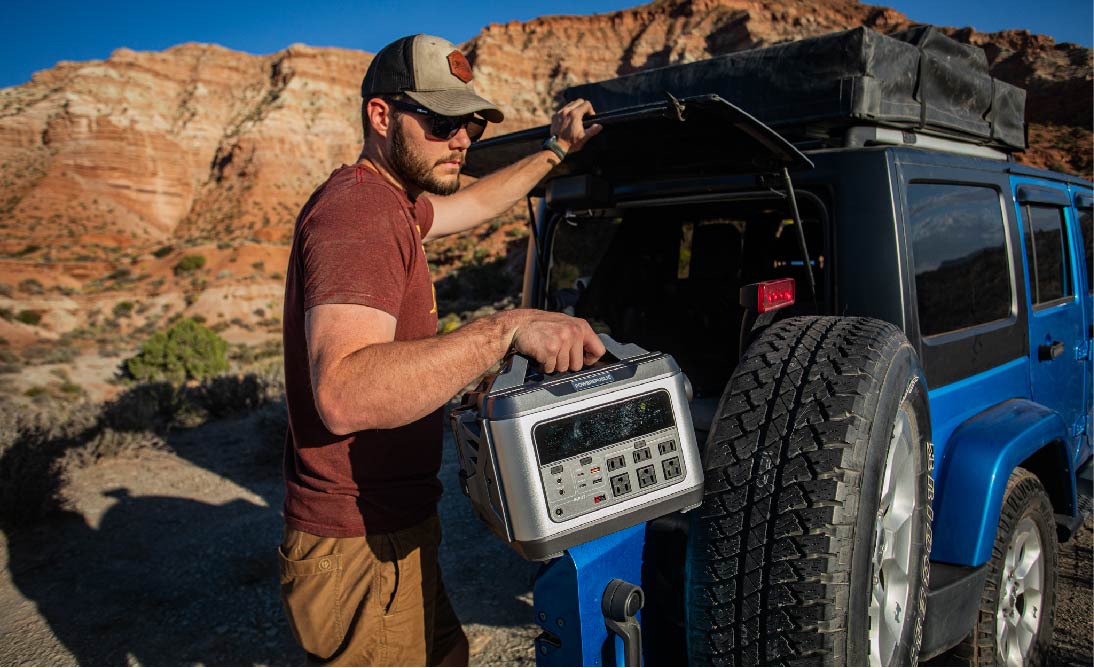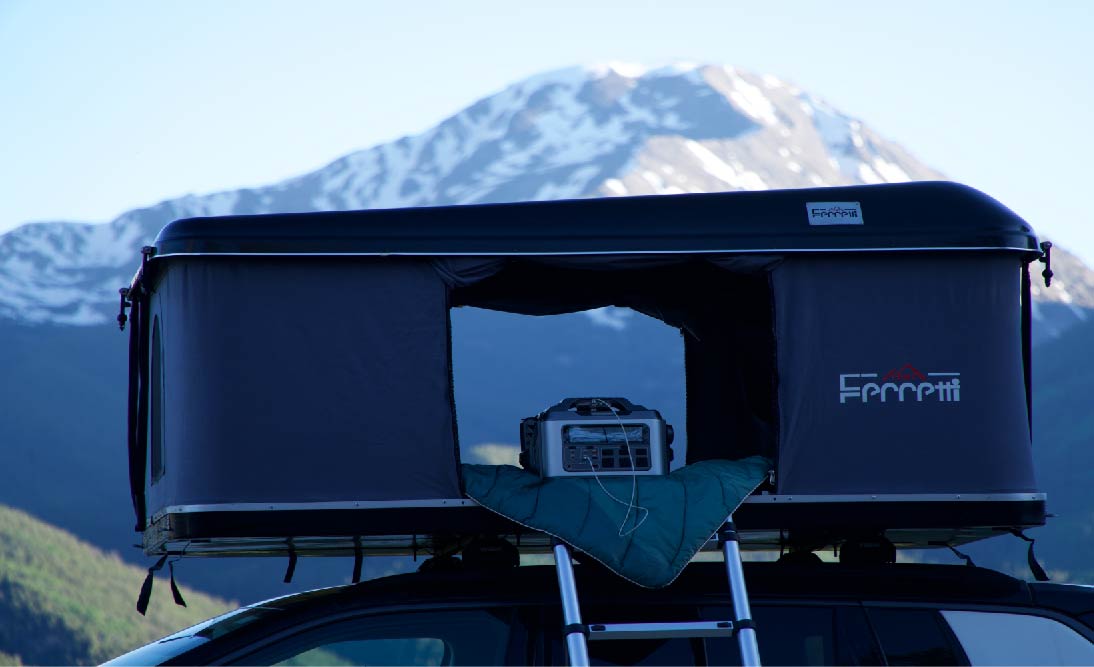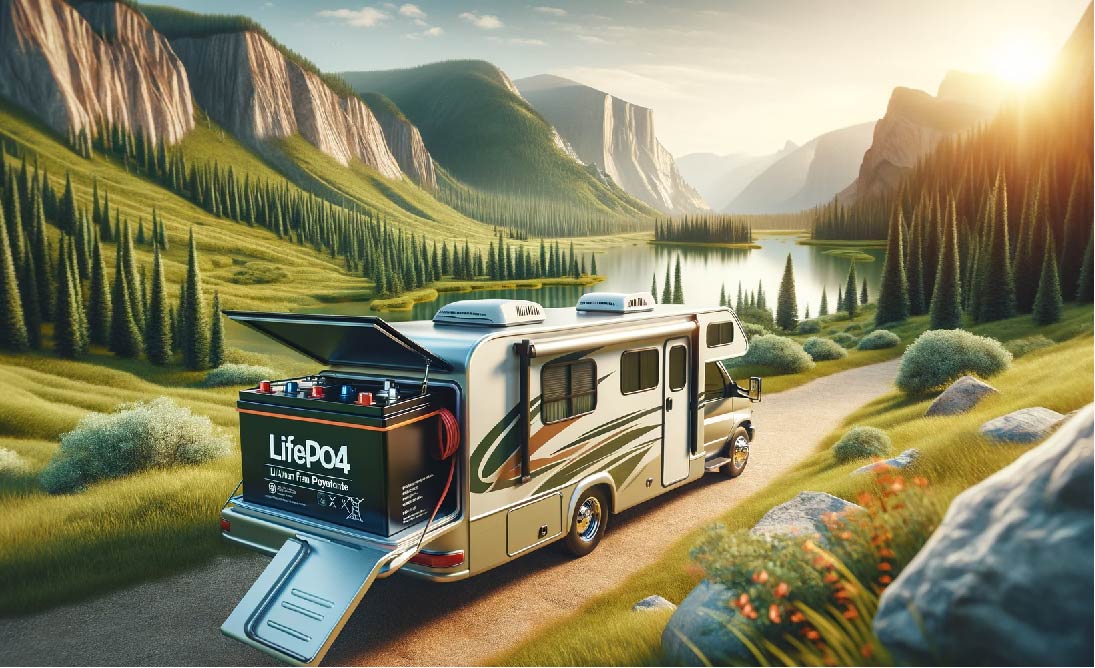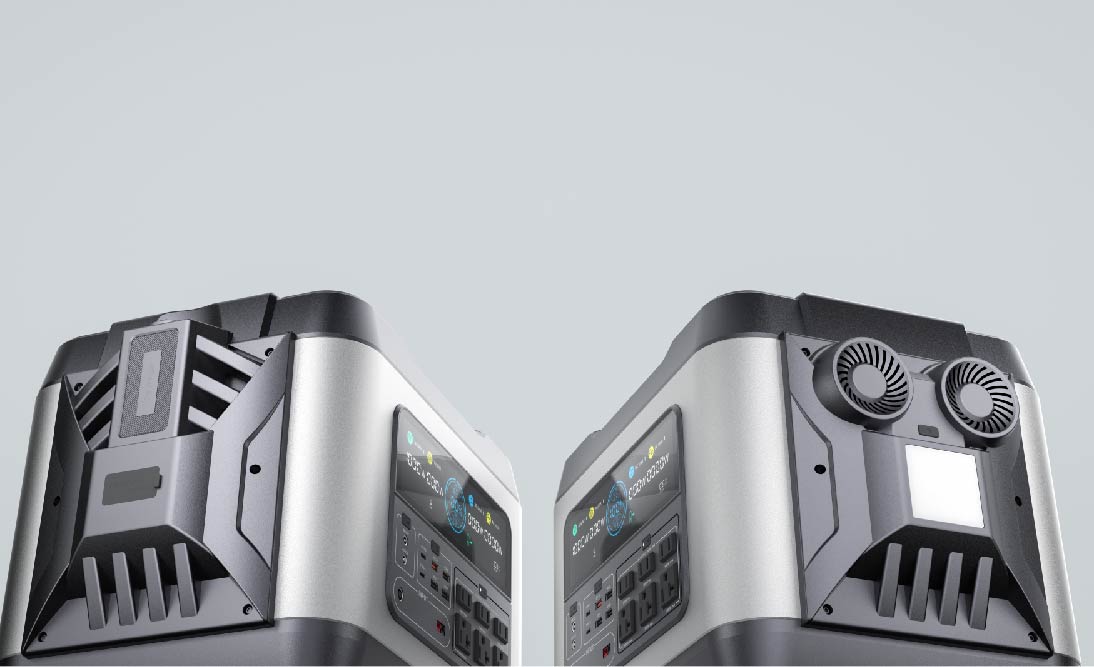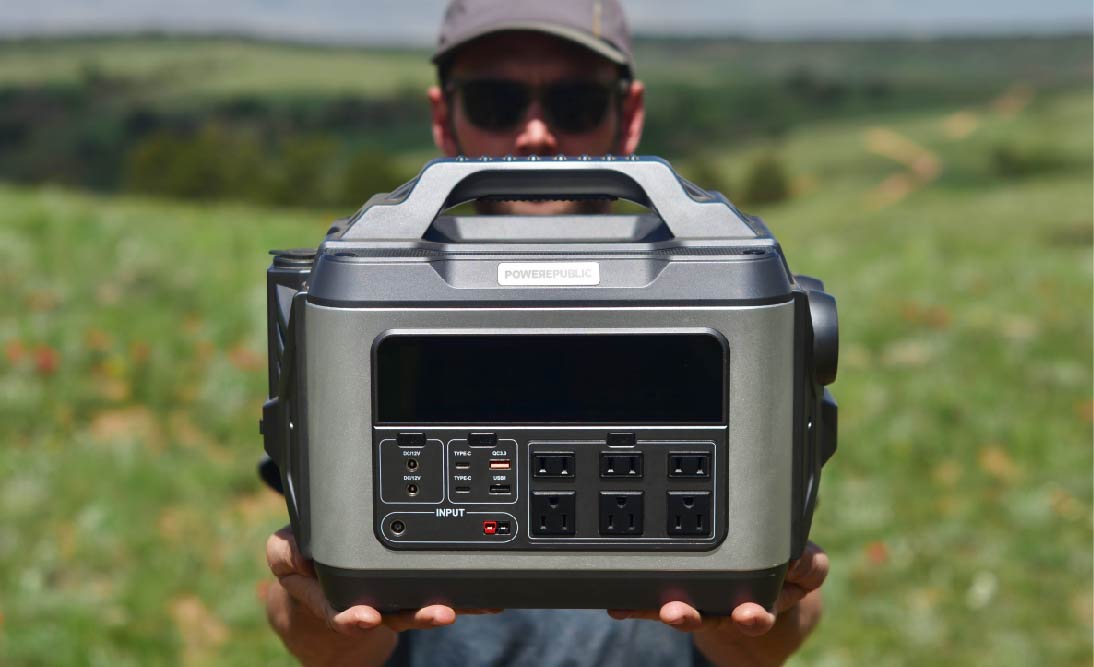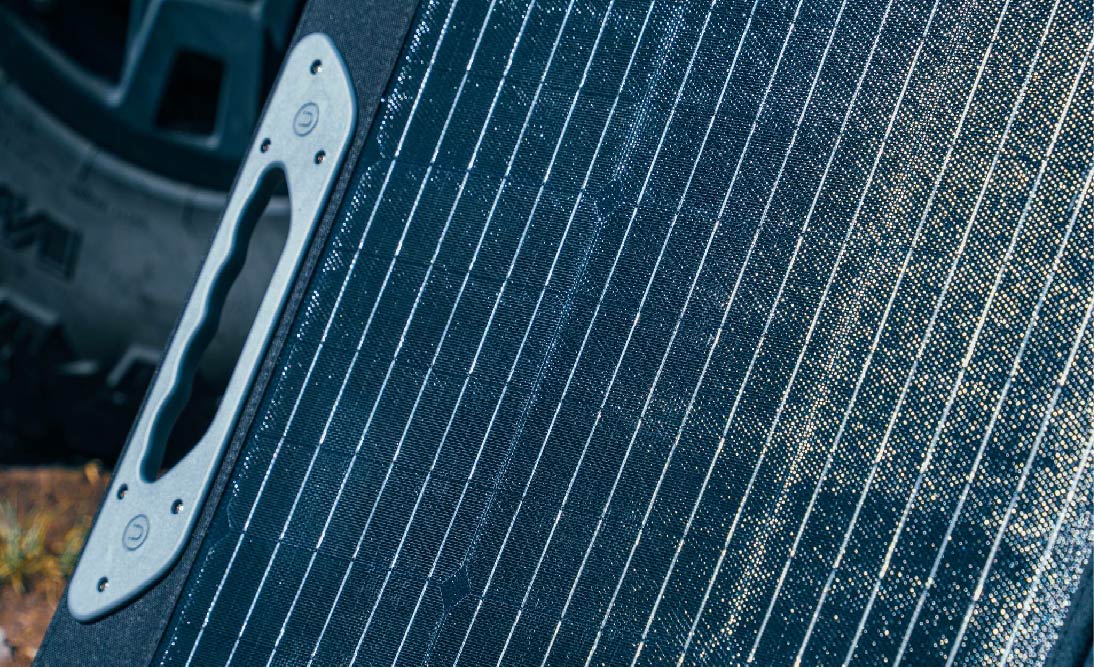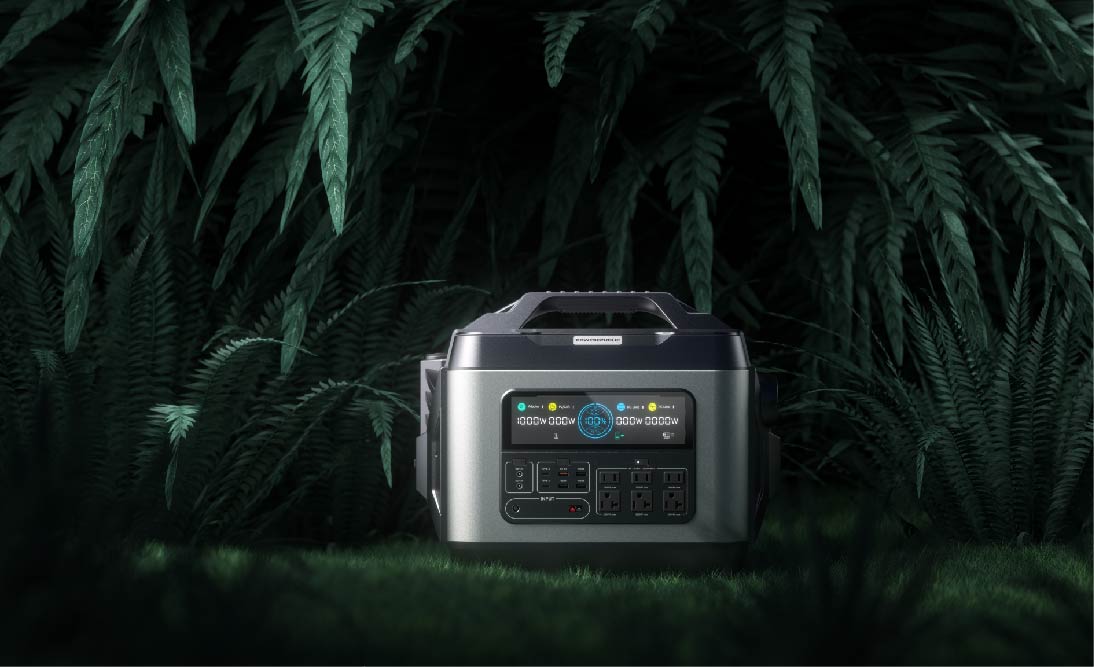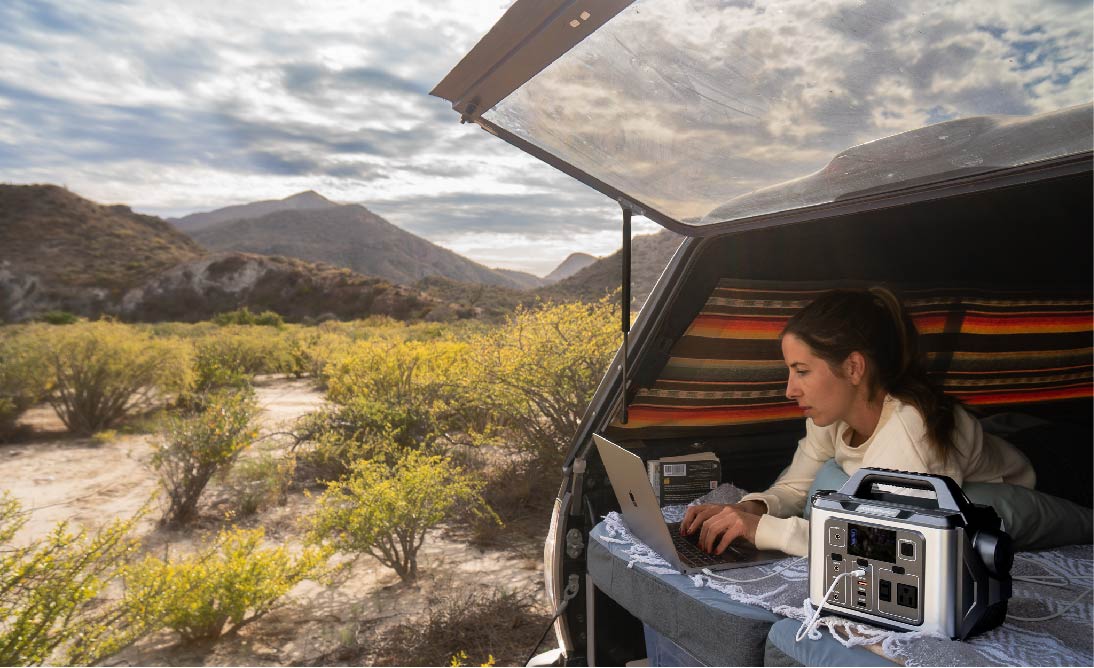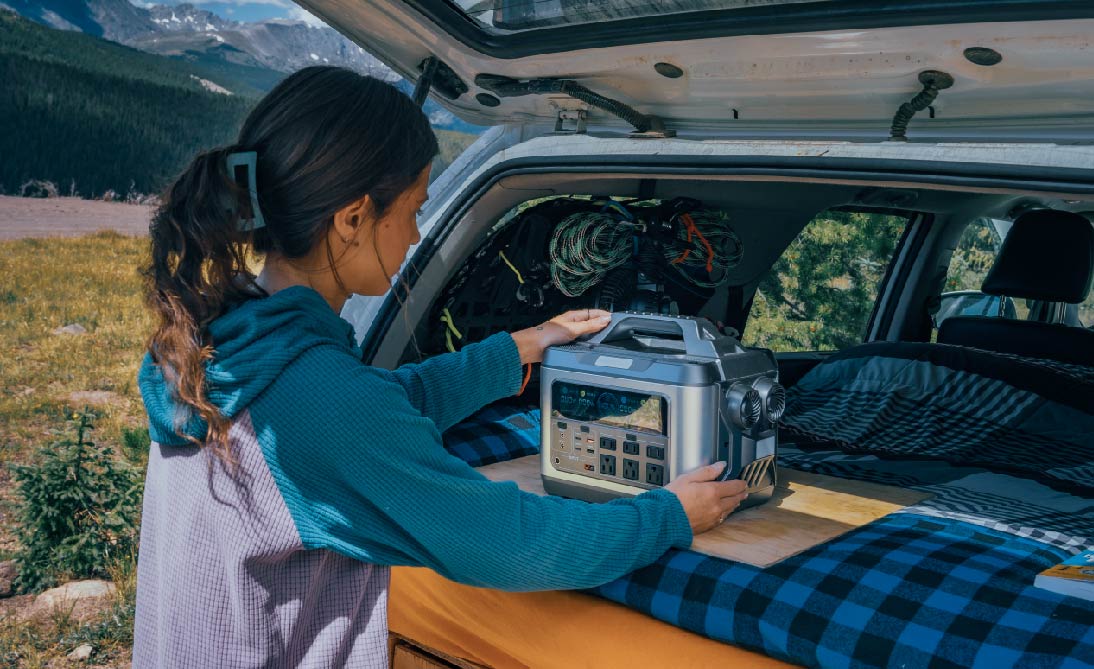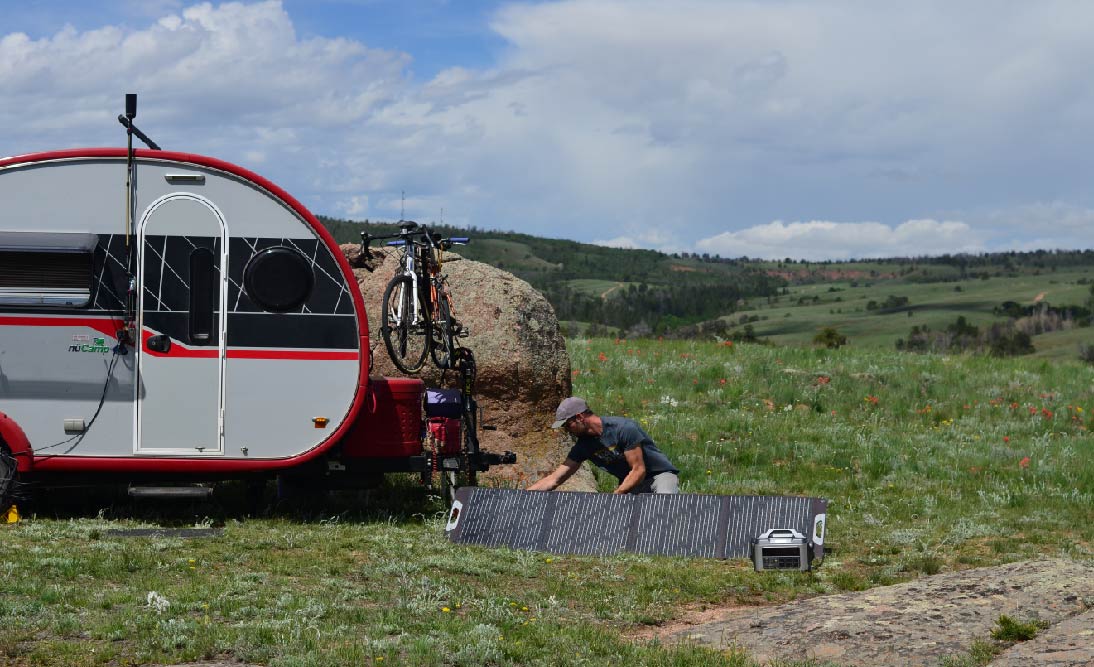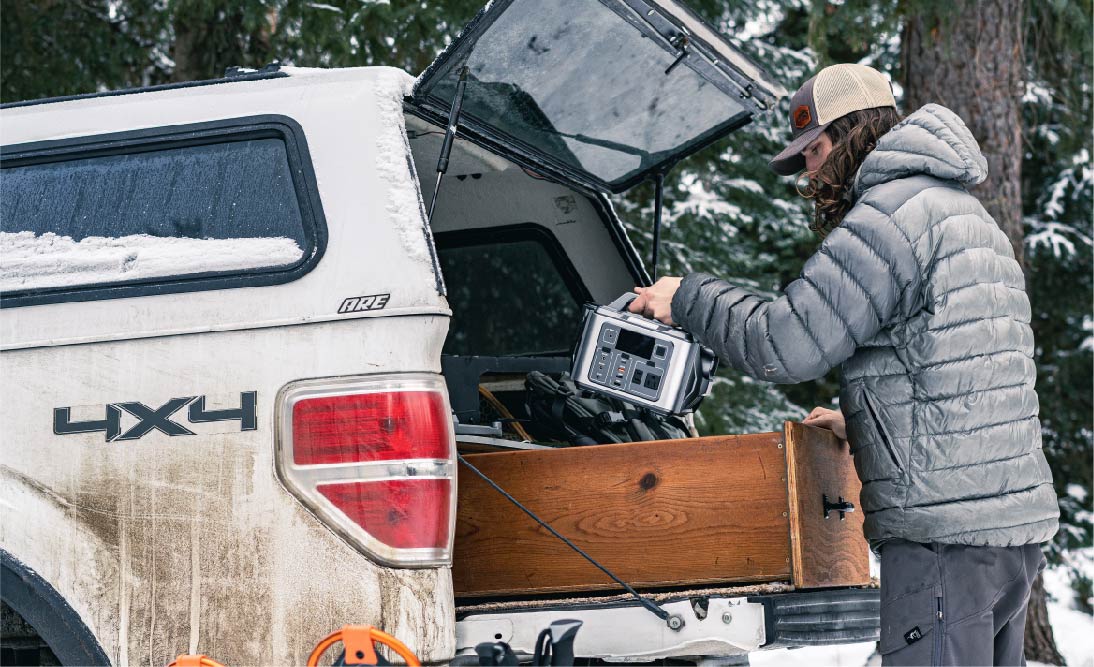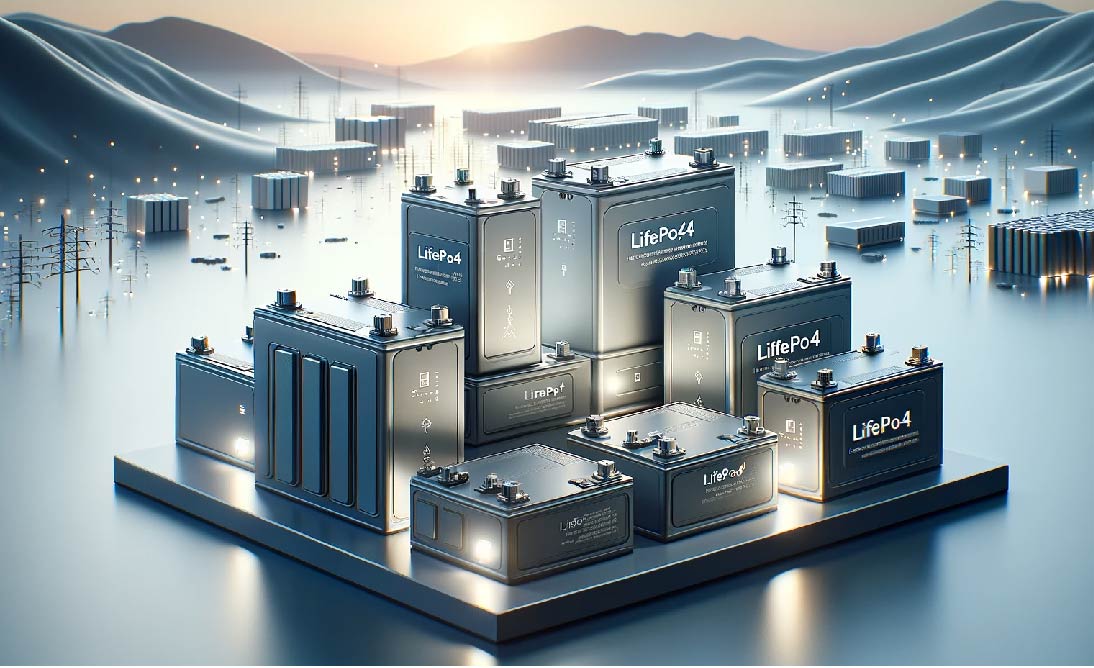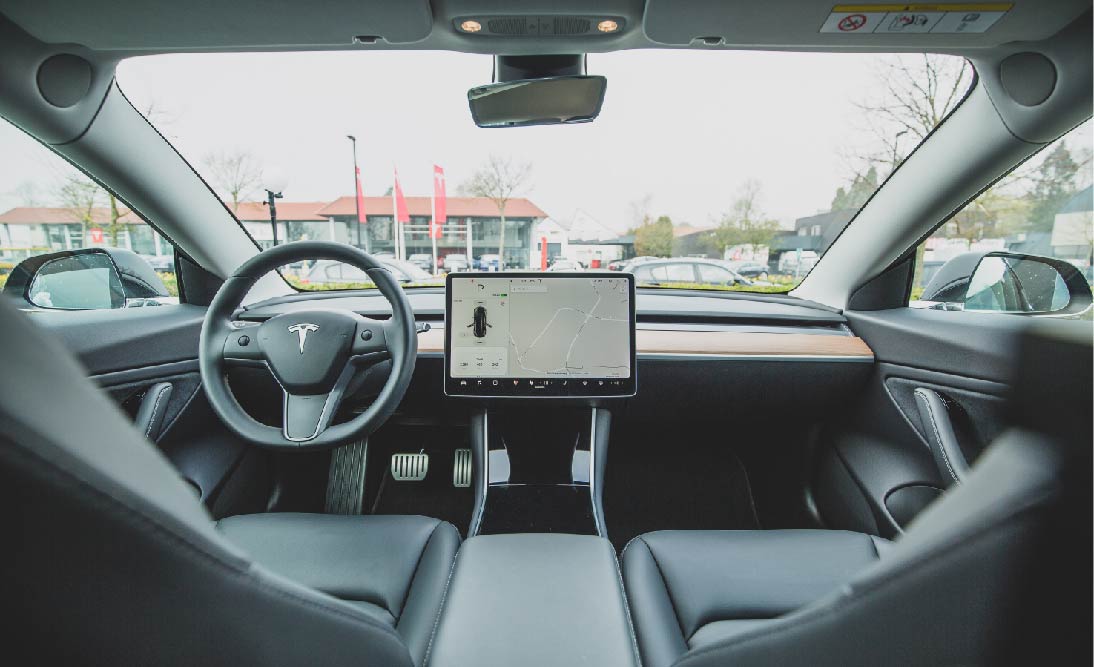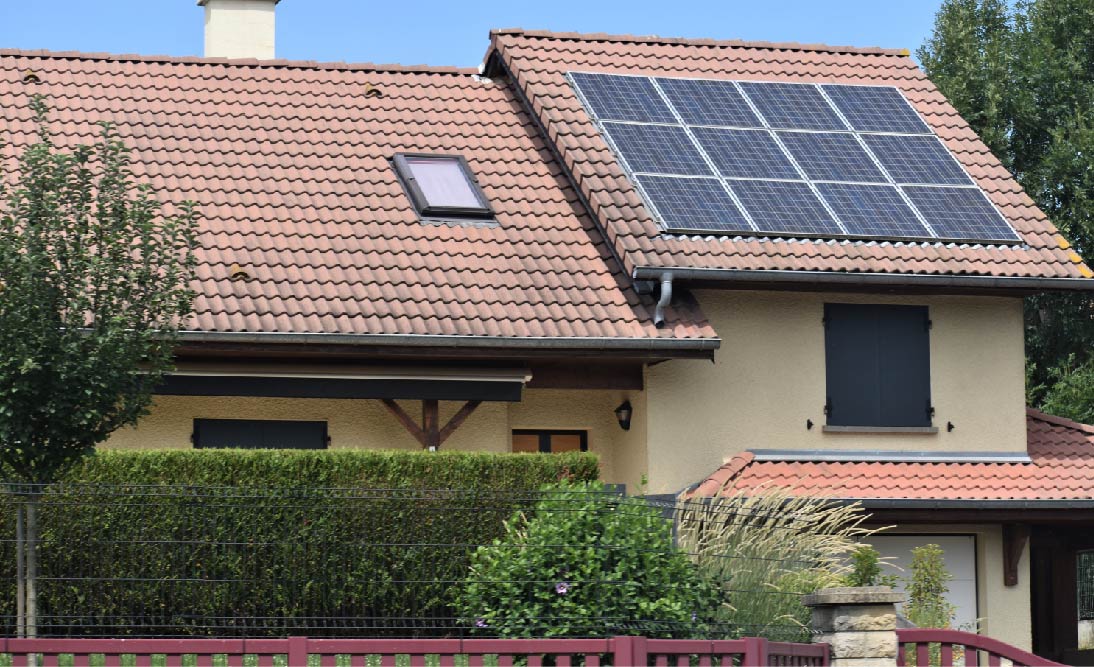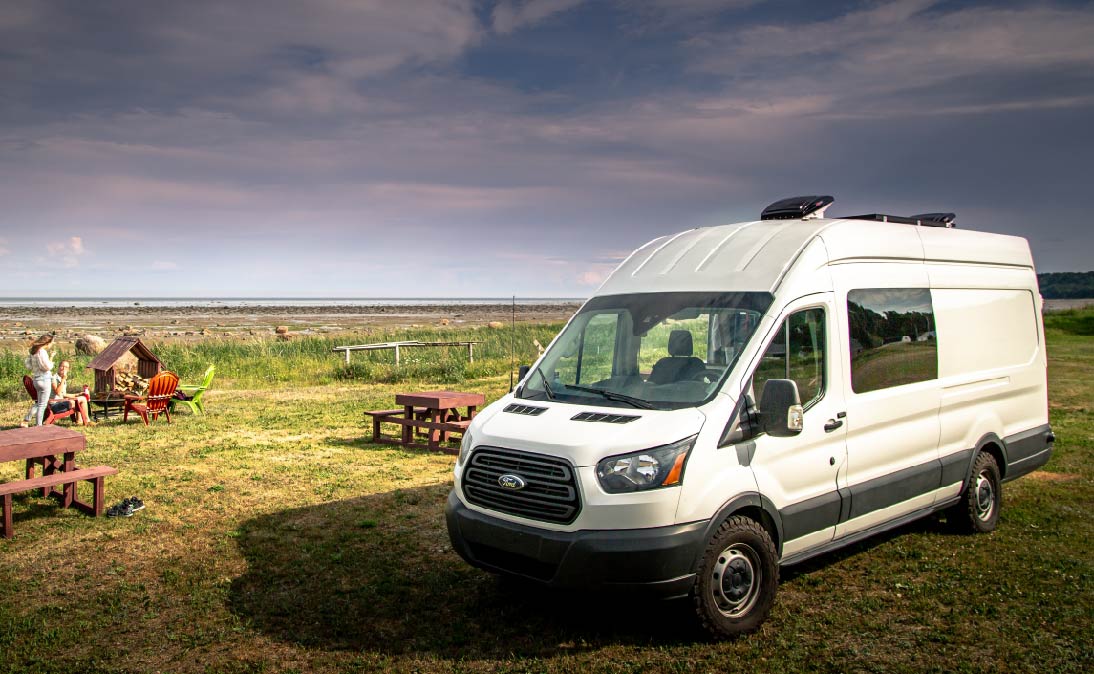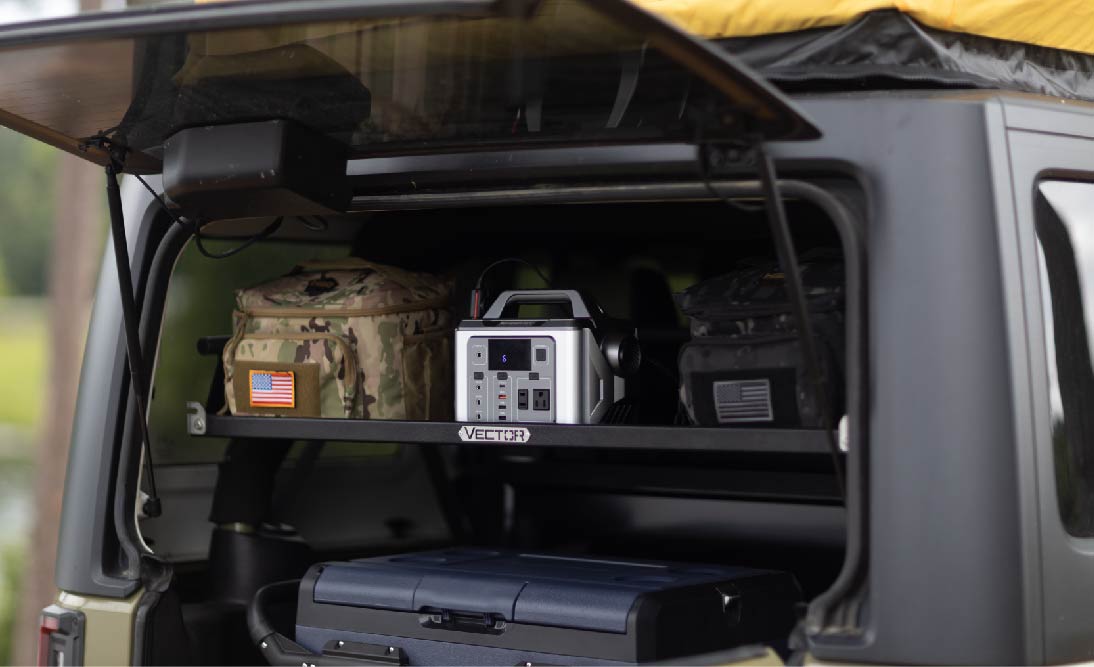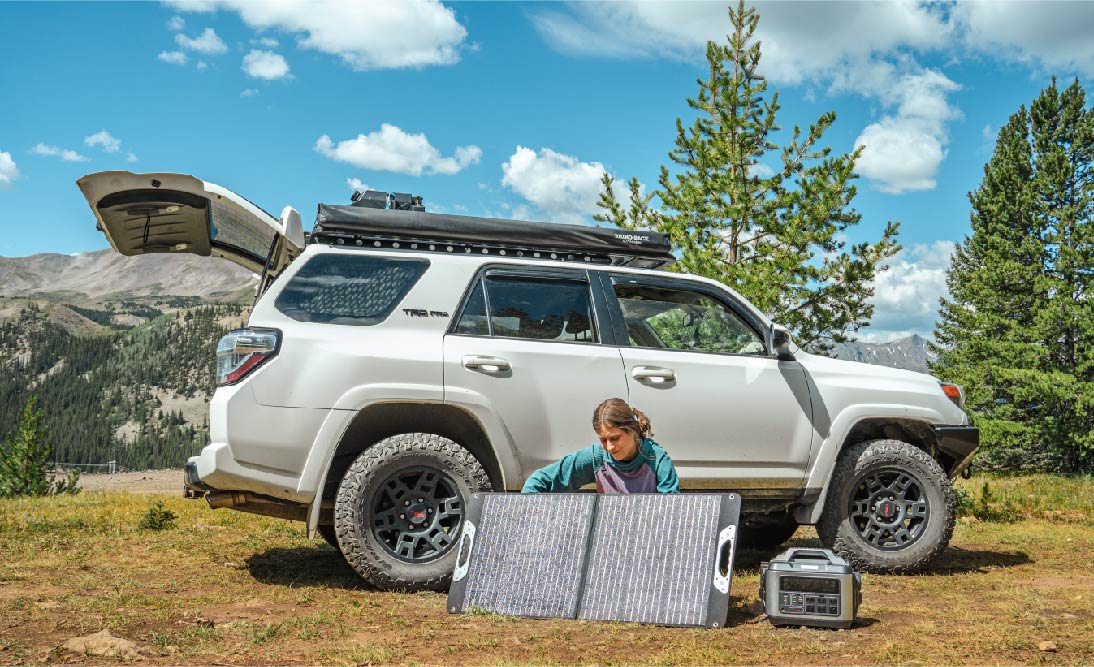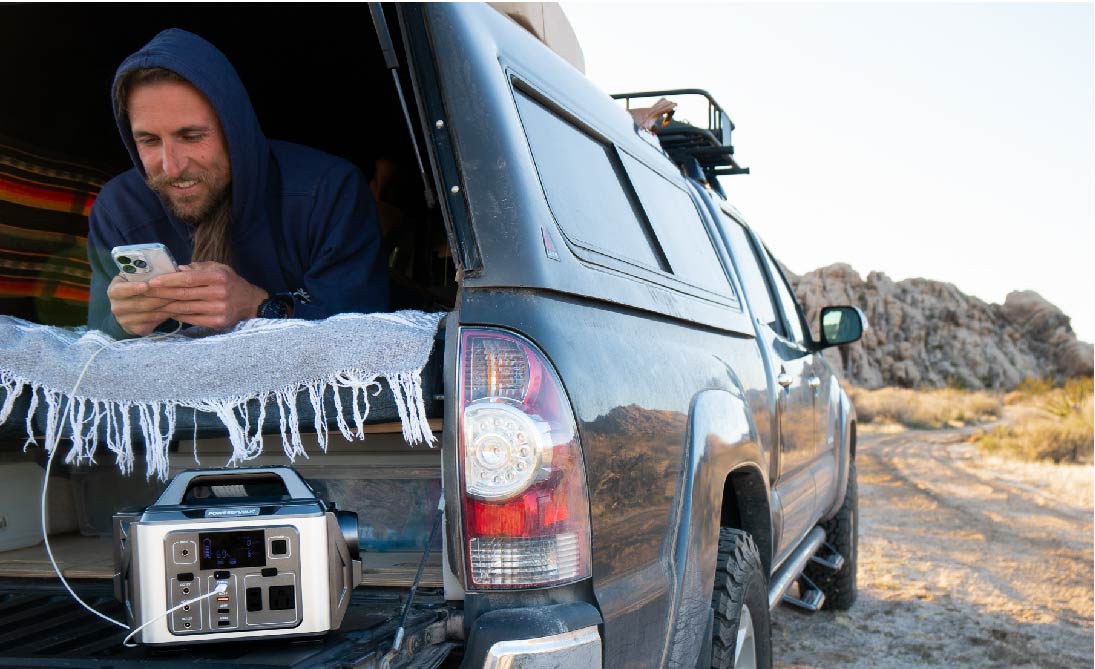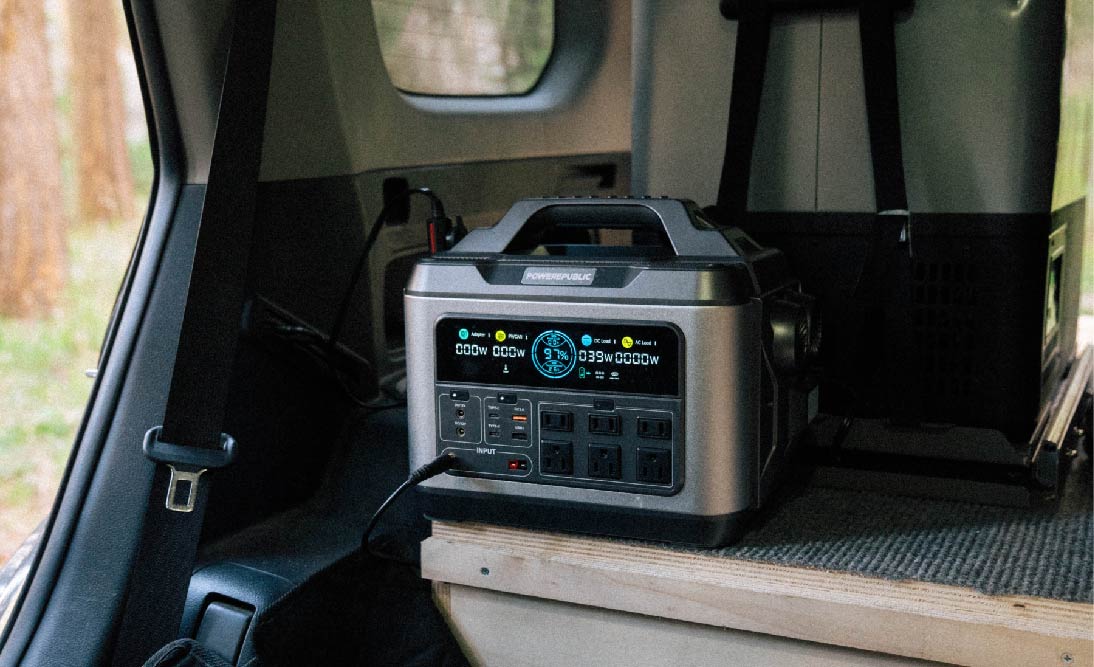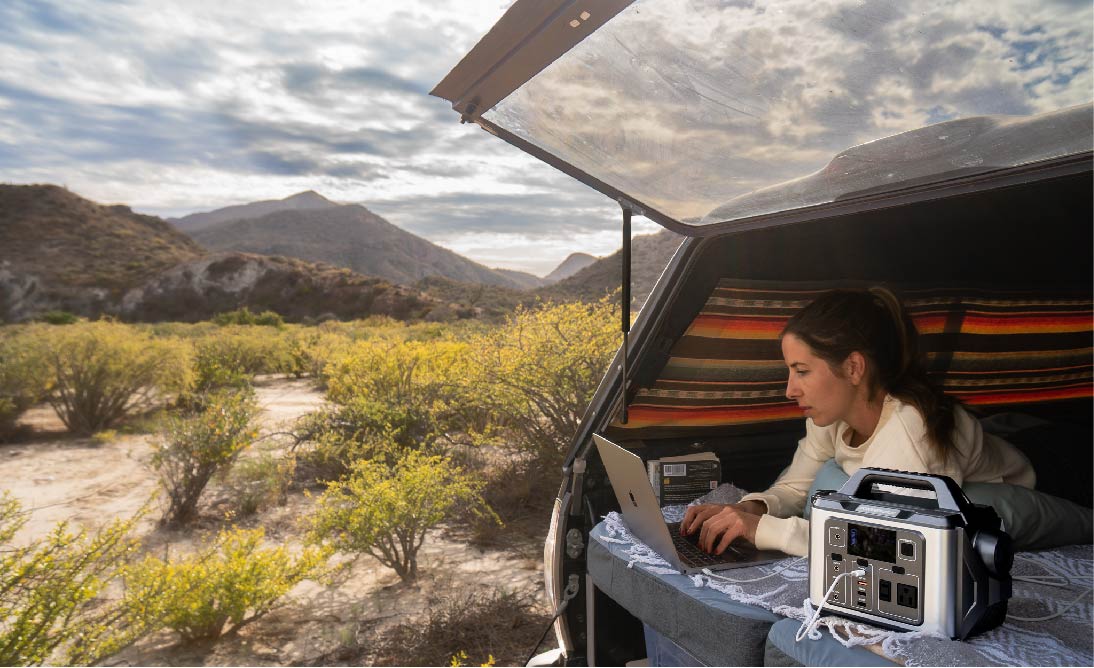Table of Contents:
-
Can Portable Solar Generator Kits Function Like Off-Grid Solar Kits?
-
POWEREPUBLIC Portable Solar Generators as Off-Grid Solar Kits
Off-grid solar kits represent a transformative approach for those seeking energy independence and sustainability. By harnessing the sun's power, these systems allow individuals and communities to generate their electricity, free from the constraints of traditional power grids. Off-grid solar kits are not only an eco-friendly solution to energy needs but also a practical choice for remote locations where grid access is limited or non-existent.
This guide delves into the nuances of off-grid solar kits, highlighting their strengths, limitations, and how to select the best option for your needs. Whether considering portable solar generator kits as a viable off-grid solution or exploring the capabilities of specific products like POWEREPUBLIC's portable solar generators, understanding the fundamentals is key. Additionally, we address common queries, including the feasibility of using off-grid kits without direct sunlight, the lifespan of solar generators, and their overall value proposition. With off-grid solar kits, achieving energy autonomy is more accessible than ever, offering a sustainable path forward in today's eco-conscious world.
Off-Grid Solar Kits Overview
Off-grid solar kits are self-contained power systems designed for locations where traditional electrical grid connections are either unavailable or undesirably dependent. These kits provide a sustainable and renewable source of energy by harnessing sunlight, making them a cornerstone for energy independence and eco-friendly living. An off-grid solar kit typically includes several key components, each with a distinct function to ensure a reliable and efficient power supply.
What are they?
An off-grid solar kit is a system that captures solar energy, converts it into electrical power, and stores it for use in locations disconnected from the main electricity grid. This autonomy makes the off-grid solar kit an ideal solution for remote areas, emergency backup power, and anyone prioritizing sustainable energy sources over conventional power options.

Main Components and Their Functions:
-
Solar Panels: The most visible part of the kit, these panels collect solar energy and convert it into direct current (DC) electricity. The efficiency and number of panels determine how much power can be generated.
-
Charge Controller: This component regulates the voltage and current from the solar panels to the batteries, preventing overcharging and damage, thus extending battery life.
-
Batteries: Batteries store the electricity generated by the panels for use when the sun is not shining. The capacity and type of batteries (e.g., lead-acid, lithium-ion) impact the system's overall efficiency and storage capabilities.
-
Inverter: The inverter converts DC electricity from the panels or batteries into alternating current (AC) electricity, the standard electrical form used by most household appliances.
-
Mounting Hardware and Wiring: Essential for installing and connecting the components securely and safely.
Applications:
Off-grid solar kits are versatile and can be used in a variety of settings, including but not limited to remote cabins, RVs, boats, remote monitoring stations, and emergency backup power. They are particularly beneficial for rural or remote areas where grid access is prohibitively expensive or impossible.
Price Range:
The cost of off-grid solar kits can vary widely depending on the system's size, components' quality, and storage capacity.
-
Basic small-scale kits can start from as low as $500, offering a minimal power supply suitable for lighting and small devices.
-
Mid-range systems suitable for a small cabin or RV might range between $1,500 to $5,000.
-
For a comprehensive system capable of powering a full-sized home, prices can range from $10,000 to $20,000 or more.
These prices include the cost of solar panels, batteries, charge controller, inverter, and necessary installation materials but may not cover professional installation fees if required.
In short, off-grid solar kits offer a viable solution for those seeking energy independence, with applications ranging from simple lighting solutions to fully powering remote homes. The initial investment can be significant; however, the long-term benefits of reduced utility bills and a smaller carbon footprint make off-grid solar kits an increasingly popular choice among eco-conscious consumers.
Strength and Limitations of Off-Grid Solar Kits
Off-grid solar kits present a compelling solution for those aiming to achieve energy self-sufficiency and reduce their environmental impact. These systems offer significant advantages but also come with inherent limitations that potential users must consider. Below, we explore the strengths and limitations of off-grid solar kits, providing detailed examples and considerations to help inform your decision.
Strengths of Off-Grid Solar Kits
-
Energy Independence: One of the primary strengths of an off-grid solar kit is the independence it provides from the conventional power grid. This is particularly beneficial for remote locations where grid access is either unavailable or unreliable. For example, a homeowner in a remote area can install an off-grid solar kit to power their home, eliminating the need for expensive grid extensions or reliance on less reliable and more polluting energy sources like diesel generators.
-
Environmental Impact: Off-grid solar kits significantly reduce carbon footprints by utilizing clean, renewable energy from the sun. Unlike fossil fuels, solar energy does not emit harmful pollutants or greenhouse gases. An average off-grid solar system can save approximately 1 ton of CO2 emissions per year, contributing positively to the fight against climate change.
-
Cost Savings Over Time: While the initial setup cost of an off-grid solar kit can be high, the long-term savings on electricity bills can be substantial. For instance, if a household spends an average of $100 per month on electricity, transitioning to an off-grid solar system could save $1,200 annually after the initial investment is recouped. Moreover, solar components' prices have been decreasing, making off-grid systems more accessible.

Limitations of Off-Grid Solar Kits
-
Initial Investment: The upfront cost of purchasing and installing an off-grid solar kit can be a significant barrier for many individuals. Comprehensive systems capable of powering a full-sized home can range from $10,000 to $20,000 or more. This investment includes solar panels, batteries, a charge controller, an inverter, and installation materials. Although the long-term benefits can offset these costs, the initial price point remains a consideration.
-
Energy Storage Challenges: Storing enough energy to meet nighttime and cloudy day needs can be a challenge, particularly in areas with less consistent sunlight. Batteries, while essential for energy storage, can be expensive and have a finite lifespan, typically around 5 to 15 years depending on the type and usage. This necessitates additional costs and planning for battery replacement.
-
Maintenance and Technical Knowledge: Maintaining an off-grid solar kit requires a certain level of technical knowledge and regular upkeep to ensure optimal performance. Components such as batteries need regular monitoring, and the system may require adjustments or repairs over time. For those not technically inclined, this can add complexity and potential additional costs for professional maintenance services.
Off-grid solar kits offer a path toward energy independence and environmental sustainability, with the potential for long-term cost savings. However, the significant initial investment, challenges related to energy storage, and the need for ongoing maintenance and technical knowledge are important limitations to consider. Balancing these strengths and limitations is crucial for anyone considering an off-grid solar kit as a viable energy solution.
How To Select the Best Off-Grid Solar Kits?
Selecting the best off-grid solar kit requires careful consideration of several factors to ensure that the system meets your energy needs, budget, and long-term sustainability goals. Here, we outline key steps and considerations, complete with examples and calculations, to help you choose the most suitable off-grid solar kit for your situation.

1. Assess Your Energy Needs
The first step in selecting an off-grid solar kit is to calculate your daily and seasonal energy consumption. This assessment will guide the size and capacity of the system you need.
Example: Suppose your household consumes an average of 5 kWh (kilowatt-hours) per day. In regions with less sunlight in winter, you may want to design your system to cover your winter consumption, ensuring year-round energy availability.
2. Evaluate Solar Potential
Your geographic location significantly impacts the efficiency and design of your off-grid solar kit. Areas with higher sunlight intensity will require fewer solar panels to generate the same amount of energy as areas with less sunlight.
Example: If you live in the southwestern United States, you'll benefit from high solar insolation, meaning you can generate more power with fewer panels compared to someone living in the northeastern United States.
3. Choose High-Quality Components
Selecting high-quality components for your off-grid solar kit is crucial for system reliability and longevity.
-
Solar Panels: Opt for panels with high efficiency to maximize energy generation in limited space.
-
Batteries: Consider lithium-ion batteries for their longer lifespan and higher efficiency, although they are more expensive upfront than lead-acid batteries.
-
Inverter: Ensure the inverter can handle your peak power demands and is compatible with your system’s voltage.
4. System Sizing and Calculation
After assessing your needs and the solar potential, calculate the size of the solar panel array, battery storage, and other components.
Example: For a household needing 5 kWh per day in an area with an average of 4 peak sun hours per day:
-
Solar Panels: You would need a system that generates 5 kWh / 4 hours = 1.25 kW. Considering inefficiencies, aim for a 1.5 kW system.
-
Batteries: To cover 2 days of autonomy (no sunlight), you’d need 10 kWh of storage. Factoring in the depth of discharge (DoD) for lithium-ion batteries (80%), you need 12.5 kWh of total capacity.
5. Budget Considerations
Your budget plays a significant role in the selection process. Compare the long-term savings against the initial investment to determine the most cost-effective solution.
Example: A 1.5 kW off-grid solar kit with sufficient battery storage might cost around $10,000. Calculate the payback period by comparing this cost with your current annual electricity expenses.
6. Manufacturer and Warranty
Choose reputable manufacturers with proven track records and strong warranties. This ensures the reliability of your off-grid solar kit and protects your investment.
7. Professional Consultation
Especially for larger systems, consulting with a professional can help refine your needs assessment and ensure that your off-grid solar kit is correctly sized and installed.
Selecting the best off-grid solar kit involves understanding your energy needs, evaluating your location's solar potential, choosing high-quality components, accurately sizing the system, considering your budget, selecting reputable manufacturers, and possibly consulting with a professional. By carefully considering these factors, you can select an off-grid solar kit that provides reliable, sustainable energy for years to come.
Can Portable Solar Generator Kits Function Like Off-Grid Solar Kits?
Yes or No?
Yes, portable solar generator kits can function like off-grid solar kits to a certain extent. They provide a flexible and mobile solution for generating electricity in areas without access to the conventional power grid.
How and Why?
Portable solar generator kits are comprised of a compact solar panel, a battery storage unit, and an inverter, all integrated into a single, portable package. They capture solar energy and convert it into electrical power, similar to stationary off-grid solar kits. The primary difference lies in their scale and portability.
For example, a portable solar generator kit can power small appliances, charge electronic devices, and provide lighting, making it ideal for camping, RVs, and emergency backup power. Unlike a full-scale off-grid solar kit designed to power a household, portable generators are more suited for temporary or smaller-scale energy needs.

Factors to Consider:
-
Capacity and Power Needs: Assess the wattage requirements of the devices you intend to power. Portable solar generators typically range from 100 watts to 2000 watts, making them suitable for smaller appliances and charging needs.
-
Portability: Consider the weight and size of the generator, especially if you plan to move it frequently.
-
Battery Storage: The capacity of the built-in battery will determine how long you can use the stored energy. Battery capacity is measured in watt-hours (Wh) or ampere-hours (Ah).
Pros and Cons
Pros:
-
Mobility: Their compact size and portability make them ideal for on-the-go power needs, such as camping or outdoor events.
-
Ease of Use: Portable solar generators are plug-and-play, requiring minimal setup and no technical expertise.
-
Quiet and Clean: They operate silently and emit no pollutants, offering an eco-friendly alternative to gasoline-powered generators.
Cons:
-
Limited Power Supply: They are not suitable for long-term, high-power needs, such as running large appliances or an entire household, like a comprehensive off-grid solar kit.
-
Battery Limitations: The storage capacity is generally lower than that of a stationary off-grid solar kit, limiting its use to short durations or low-power devices.
Example Calculation: Suppose you have a portable solar generator with a capacity of 500Wh and you want to power a 10W LED light. The generator could theoretically run the light for 50 hours (500Wh / 10W = 50h). In contrast, a full-scale off-grid solar kit with a battery bank of 10kWh could support the same light for 1,000 hours, highlighting the difference in scale and application between the two solutions.
While portable solar generator kits can function similarly to off-grid solar kits by providing renewable energy independently of the grid, they are best suited for smaller, temporary power needs. When considering a portable solar generator, it's essential to evaluate your power requirements, the portability needs, and the limitations of battery storage. Despite their limitations, portable solar generators offer a versatile and eco-friendly solution for on-the-go power, complementing the broader capabilities of comprehensive off-grid solar kits.
POWEREPUBLIC Portable Solar Generators as Off-Grid Solar Kits
Now we know that portable solar generator kits can function similarly to off-grid solar kits by providing renewable energy independently of the grid. They are best suited for smaller, temporary power needs. So, for those of you who are searching for options like these, consider POWEREPUBLIC solar generator kits.
1. For Short Trips and Camping - Consider the POWEREPUBLIC T306+PV100, T1200+PV100, or T1200+PV200 solar generator kits
The T306+PV100 is more suitable for charging essential devices during hiking, backpacking, and short trips. The 300W rated power (600W surge), 296Wh capacity, and 10 output ports of the T306 models are versatile enough to cover the needs of your essential devices.

The T1200+PV100 and T1200+PV200 are more suitable for trips with higher power demands, such as powering a TV, blender, coffee machine, electric blanket, and so forth. The 1200W rated power (2600W surge), 1110Wh capacity, and 13 output ports of the T1200 model can handle items with higher power on the go, giving you peace of mind.
2. For Vanlife and RVlife - Consider the POWEREPUBLIC T1200+PV100, T1200+PV200, or T2200+PV200 solar generator kits
We know the T1200+PV100 and T1200+PV200 are suitable for higher power demands. However, if you live in a van or an RV and want to power devices like hair dryers, microwaves, electric grills, and so forth, the T2200+PV200 would be a better choice. The 2200W rated power (4500W surge), 2240Wh capacity, and 15 output ports of the T2200 model can cover more of your power needs on the road to sustainable living.

3. For Home Backup During Short-term Power Outages - Consider the POWEREPUBLIC T3000+PV200 solar generator kit
If you live in areas with frequent power outages, the T3000+PV200 would be a great option, as the T3000 can power almost 95% of home devices and appliances, such as refrigerators, space heaters, washing machines, and so forth. The 3000W rated power (6000W surge), 3200Wh capacity, and 15 output ports of the T3000 model can provide enough power for you during power outages.

FAQ I: Can I Use Off-Grid Solar Kits Without Solar?
Answer: No, off-grid solar kits require solar panels to capture sunlight and convert it into electrical power. Without solar panels, the system cannot generate electricity. The solar panels are a critical component of the kit, converting solar energy into direct current (DC) electricity.
For example, if you have a solar kit designed to produce 5 kWh of power per day using solar panels, removing the solar component would mean you no longer have a source of energy to convert and store in batteries for later use. Off-grid solar kits are designed to operate as a complete system, where each component plays an essential role in generating, storing, and supplying electricity.

FAQ II: What’s the Lifespan of a Solar Generator?
Answer: The lifespan of a solar generator largely depends on the quality of its components, particularly the battery storage unit. On average, the battery in a solar generator can last between 5 to 15 years before needing replacement, depending on the type (e.g., lead-acid vs. lithium-ion) and how it's used. The solar panels themselves can last 25 years or more with minimal degradation in efficiency, usually around 0.5% to 1% per year.
For instance, a high-quality solar generator with a lithium-ion battery might retain up to 80% of its original capacity after 1,000 charge cycles, translating to several years of reliable service if used and maintained properly.

FAQ III: Are Solar Generators Worth the Money?
Answer: Yes, solar generators can be worth the investment, especially when considering long-term benefits and specific use cases. They offer a renewable, clean source of energy, significant savings on electricity bills over time, and independence from the grid.
For example, if you invest $2,000 in a solar generator for emergency backup and it replaces $100 of grid electricity every month, the system would pay for itself in under 2 years. After that, you're essentially generating free electricity, minus maintenance costs. Moreover, for applications where traditional power is not an option, such as remote locations, the value of a solar generator is even greater. The cost-effectiveness increases with the rising cost of electricity and when factoring in potential incentives for using renewable energy sources.
So while off-grid solar kits rely on solar panels to function and have components with finite lifespans, their long-term benefits in terms of cost savings, energy independence, and environmental impact often justify the initial investment.

Final Thoughts
In conclusion, off-grid solar kits offer a compelling solution for those seeking to harness the sun's power for energy independence and sustainability. These kits not only provide a renewable source of energy for locations beyond the reach of traditional power grids but also embody an eco-friendly approach to meeting our energy needs.
By choosing the right off-grid solar kit, individuals and communities can enjoy the dual benefits of reducing their carbon footprint and achieving autonomy from utility providers. Despite the initial investment and the need for ongoing maintenance, the long-term savings and environmental benefits make off-grid solar kits a wise choice for the eco-conscious consumer. Whether for remote cabins, RV life, or emergency backup power, off-grid solar kits stand out as a reliable and sustainable energy solution, marking a significant step forward in our journey towards a greener planet.
Choose POWEREPUBLIC Solar Generator Kits as Off Grid Solar Kits for Short-term and Temporal Use.









